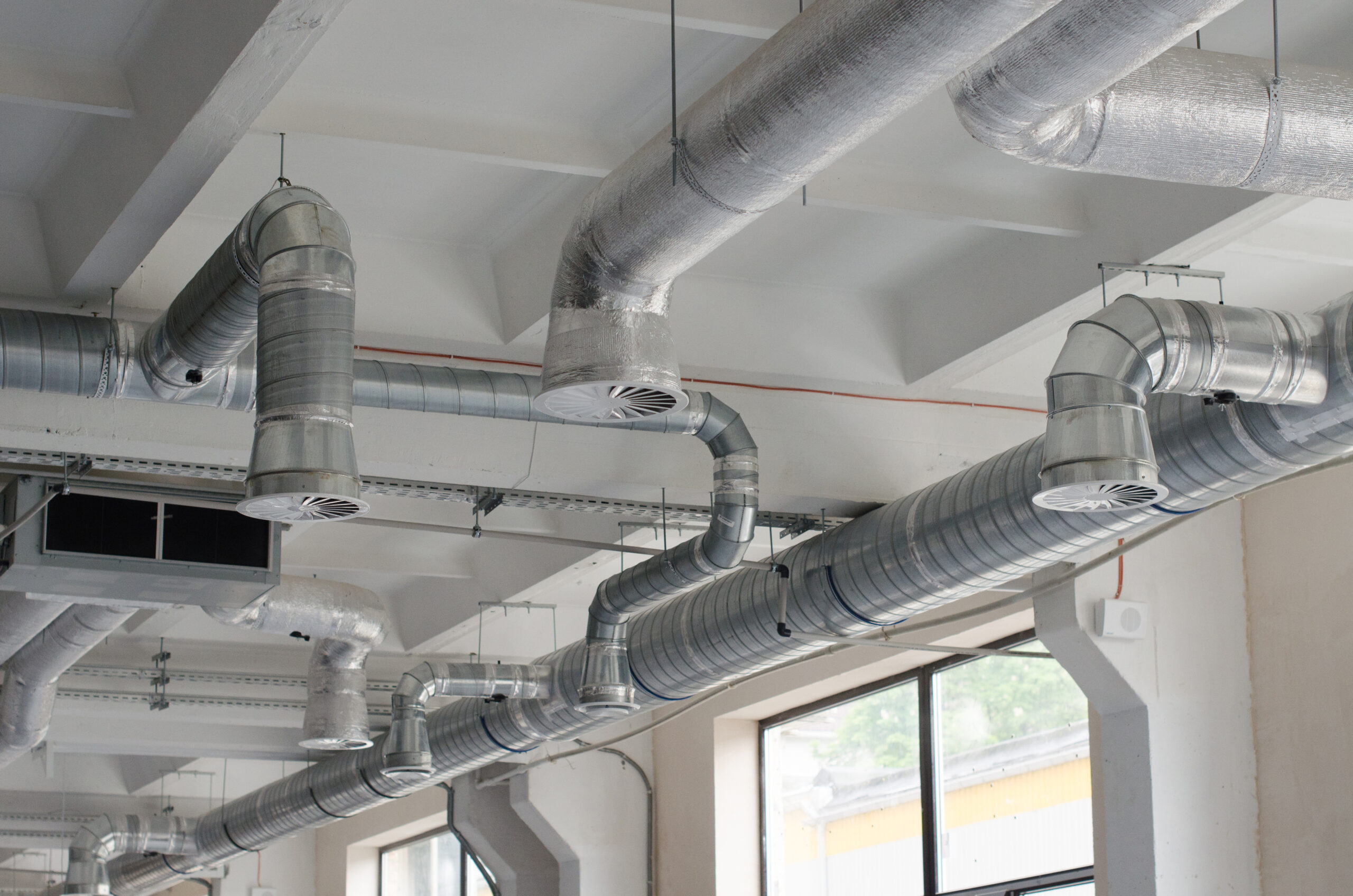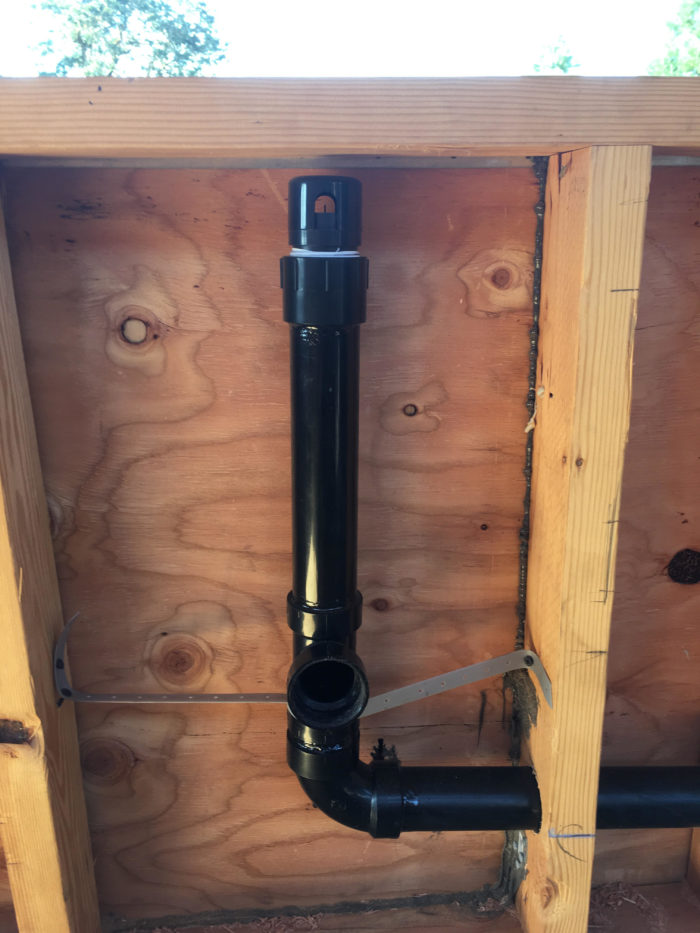The Necessity of Proper Ventilation in Home Plumbing Systems
The Necessity of Proper Ventilation in Home Plumbing Systems
Blog Article
Just about every person will have their own individual opinion in relation to What Are Plumbing Vents and Why Are They Important?.

Appropriate air flow in pipes systems is typically forgotten, yet it is important for maintaining the performance and security of your home's pipes. Ventilation helps regulate atmospheric pressure, avoid the accumulation of damaging gases, and ensure the reliable elimination of waste. In this guide, we will certainly discover the significance of correct plumbing ventilation, exactly how it works, and the benefits it brings to your plumbing system.
Recognizing Air Flow in Pipes
Ventilation in plumbing refers to the network of pipelines that enable air to flow with the drainage system. These vents offer numerous purposes, consisting of controling atmospheric pressure within the pipelines, protecting against sewage system gases from going into the home, and helping in the smooth flow of wastewater.
How Ventilation Functions in Pipes Equipments
Air Pressure Guideline
Proper ventilation maintains well balanced atmospheric pressure within the plumbing system. When water flows with pipelines, it displaces air. Without ample air flow, this variation can produce unfavorable stress, resulting in reduce drains pipes or siphoning of water from catches, which can create unpleasant odors to seep into the home.
Stopping Sewage System Gas Build-up
Among the most vital features of plumbing vents is to stop sewer gases, such as methane and hydrogen sulfide, from gathering within the home. These gases can posture major wellness risks and are very flammable. Vent pipes allow these gases to run away securely outdoors.
Aiding in Waste Removal
Air flow helps in the efficient removal of wastewater by avoiding airlocks in the drainage system. When air can move easily through the vents, it enables water and waste to flow smoothly with the pipelines, minimizing the risk of clogs and back-ups.
Sorts Of Plumbing Vents
Key Heap Vent
The main stack vent, likewise called the air vent stack, is the primary vent in a plumbing system. It prolongs from the primary drain align via the roof, enabling gases to run away and fresh air to enter the system.
Branch Vent
Branch vents link to the primary stack vent and offer specific components, such as sinks, bathrooms, and showers. These vents guarantee that each component has sufficient ventilation to work properly.
Air Admittance Shutoff (AAV).
An Air Admittance Shutoff (AAV) is a one-way valve that enables air to enter the pipes system without the need for a typical vent pipeline extending through the roof. AAVs are generally used in improvements or locations where setting up a basic air vent is not practical.
Indicators of Poor Ventilation in Pipes.
Slow Draining Fixtures.
If your sinks, tubs, or toilets are draining pipes slowly, it could be a sign of bad ventilation. Insufficient air flow can develop a vacuum cleaner result, making it tough for water to drain pipes effectively.
Gurgling Sounds.
Gurgling sounds coming from drains are usually a result of air being sucked with water catches as a result of unfavorable pressure in the pipelines. This is a clear sign of insufficient air flow.
Unpleasant Smells.
Sewer smells inside your home are a warning that your pipes system is not appropriately ventilated. This could mean that sewage system gases are not being sufficiently aired vent outside, leading to possibly dangerous conditions.
Typical Air Flow Errors.
Inadequate Vent Sizing.
Using undersized air vent pipelines can cause bad air flow and stress discrepancies in the system. It's important to utilize vents that satisfy the particular requirements of your pipes system.
Improper Vent Positioning.
Positioning vents as well far from the fixtures they serve can reduce their effectiveness. Correct placement guarantees that air can flow freely and successfully with the system.
Disregarding Code Needs.
Building codes provide certain standards for plumbing air flow. Ignoring these codes can cause a system that falls short to work properly and might result in costly repairs or health hazards.
Benefits of Correct Air Flow.
Boosted System Performance.
Properly ventilated pipes systems run a lot more effectively, with less obstructions, faster draining, and less stress on the pipelines. This performance extends the lifespan of the plumbing system.
Improved Air High Quality.
By stopping sewer gases from entering your home, appropriate air flow contributes to far better indoor air quality, making your living setting healthier and a lot more comfortable.
Preventing Water Damages.
Ample air flow aids protect against water from being siphoned out of traps, which can lead to drain gases getting in the home and triggering water damages over time.
Steps to Guarantee Correct Air Flow.
Consulting Plumbing Codes.
Always consult neighborhood pipes codes when making or modifying your pipes system. These codes supply the needed standards for appropriate venting and guarantee your system fulfills safety standards.
Routine Inspection and Upkeep.
Normal inspections can assist identify potential air flow issues prior to they come to be major troubles. Upkeep jobs, such as cleaning vent pipelines and checking for clogs, are essential for keeping the system in good working order.
Professional Setup.
For new installments or major adjustments, it's wise to work with a specialist plumbing technician. They have the know-how to guarantee the ventilation system is properly designed and installed according to code.
Final thought.
Proper air flow is a vital element of any kind of plumbing system, making sure that it works efficiently and securely. By comprehending the importance of ventilation, recognizing the indications of inadequate air flow, and taking actions to maintain your system, you can avoid pricey issues and safeguard your home's air top quality.
4 Things You Should Know About Your Plumbing Vents
What Plumbing Vents Are
Also called a vent stack, a plumbing vent is a vertical pipe attached to your drain line that runs through your roof. The plumbing vent pipe, or plumbing air vent, removes gas and odors from your plumbing system and allows fresh air to enter the pipes, helping the water to flow out of the drain pipes.
What Plumbing Vents Do
Plumbing vents have two basic functions. One of which is to allow unpleasant smelling wastewater and sewer gasses to escape your plumbing system instead of entering your home. Plumbing vent pipes are typically located on roofs, away from windows, to ensure the fumes exit the home completely.
The other function of the plumbing vent is to move fresh air into your plumbing system. This helps move water through every plumbing fixture in your house, like toilets and sink drains. Think of the way in which you need to let a little air into the bottle as you pour soda in order to make the drink flow smoothly.
Different Types of Plumbing Vents
True vent: This is the most common vent option. In simplest terms, a true vent is a vertical pipe attached to your drain line that exits through the roof. They often function as the main vent that other fixtures can connect to. Re-vent pipe or auxiliary vent: Attached to the drain line near specific plumbing fixtures, re-vent pipes run up and over to connect to the main vent. Common vent: Two plumbing fixtures installed on opposite sides of a wall are typically tied into the vent stack using something known as a sanitary cross. Wet vent: This venting option operates as a drain pipe and a vent at the same time. Wet vent drainage systems drain water from one fixture while venting the air from another. Although they’ve been used for over 100 years, wet vent systems have only recently been added to the plumbing code in many areas. If you’re planning on installing one in a bathroom remodel, make sure you check your local code prior to construction. Loop vent: For free-standing fixtures like kitchen island sinks, loop vents are ideal. These vent pipes run under the floor, rise from the P-trap, and create a loop inside the cabinet sink. Air admittance valve: An AAV is a one-way mechanical valve typically installed at the site of the plumbing fixture. AAVs allow venting to occur without having to tie into a larger venting system. They’re ideal for venting fixtures where you aren’t able to easily connect to an existing vent system. Common Plumbing Vent Issues
Although vent pipes typically don’t have water flowing through them, they’re still subject to many typical plumbing issues. For example, clogs are one of the most common problems associated with sewer vent pipes. If your vent pipe gets clogged, all of your plumbing fixtures tied into the vent stack will be affected.
A sink with a slow drain that bubbles and gurgles or a strong sewage smell around your toilet are both indicators that your toilet vent pipe is clogged. Because most vent pipes exit through the roof, old leaves, twigs or even a bird’s nest could be clogging the pipe.
Clogs in your vent pipe system cause a buildup of negative pressure, meaning that water won’t be able to flow out of your home very well. It’s similar to putting your finger over the opening of a straw to trap water inside. When you remove your finger, the water is able to flow out of the straw.
If you suspect you have any blockage in your vent, make sure you have a professional come examine the situation. Left unchecked, a blocked air vent can lead to other costly repairs, like leaks and sediment buildup.
Under Pressure
Pipe vents are essential aspects of a home’s plumbing system. Owning a home means learning about all sorts of things you never put much thought into before. But by understanding as much as you can about the important systems of your home, you can keep those budgets intact and those anxiety levels low.
https://www.homeserve.com/en-us/blog/home-improvement/plumbing-vents/

I was shown that article about What Is A Plumbing Vent & How Do They Work? through a buddy on another web blog. Appreciated our post? Please share it. Help somebody else find it. Thanks for your time. Come back soon.
Book With Us Today! Report this page